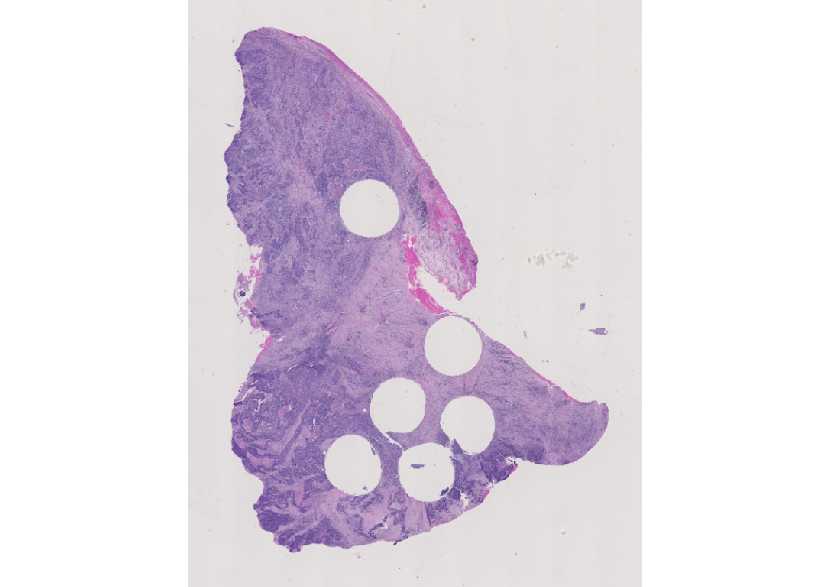Brief Description
Datacolor Chromacal is a software and calibration slide combination intended for post-acquisition standardization of color and brightness of brightfield images. The combination or its components (especially the slide) may be attractive for digital pathology device calibration or validation.
Status
Under Development: Recruiting authors and reviewers
Other Options:
Ready for Science-Sharing Seminar: See page with session proposal
Ready for Drafting for White Paper: See page with authors and outline
Published
Authors
Chronicle authors and contributors and their contributions/role (author, editor, date). Please include links to NCIPhub profile pages to facilitate messages to page contributors.
Mark Clymer (author, 04 Dec 2015) https://nciphub.org/members/2177
Overview
In 2014, Datacolor introduced Chromacal, a software and calibration slide combination intended for post-acquisition standardization of color and brightness of brightfield images. Today, the calibration slide is being evaluated as both a color calibration target and a color reference target. The software includes a color management algorithm that can generate an ICC color profile specific to an imaging system.
The Chromacal slide features a matrix of 20 “patches” consisting of 16 color and 4 neutral density interference filters. The 16 color filters can be described as 20nm (FWHM) bandpass filters configured to span the visible spectrum from 400nm-700nm. The neutral density patches are generally used for diagnostic evaluation of image linearity and exposure.
Due to the nature of interference filters, the Chromacal calibration slide is highly resistant to fading (unlike plastic film, photographic film, and stained/dyed biological material).
An image of the Chromacal slide acts as the “color fingerprint” or “color profile” of the imaging system, accounting for color nuances in light source, optics, and the acquisition device. The software compares the matrix image with measured characteristics of the same slide, and generates a corrected ICC color profile based on the difference. The profile can be used to calibrate images in a post-acquisition approach, or directly applied to the acquisition device for system-level calibration.
Why Important
The Chromacal calibration slide provides stable color targets for calibration or reference. The slide is suitable for all transmitted colors, and is not specifically designed nor restricted for a particular stain, dye or tissue (e.g. H&E). The software can provide a system-specific ICC color profile. The monitor calibration tools provide standardization of computer displays to industry standards.
Related WSI System Components
System-level is an appropriate response here.
Materials and Methods
Datacolor Chromacal was developed primarily for use with traditional microscope imaging systems (microscope + camera). The original method for post-acquisition standardization is as follows:
- Capture image of calibration slide. The slides are serialized, corresponding to a “measurement file” (physical measurement of spectral characteristics) that is unique to each slide. Then capture specimen images. Due to nuances in optics that impact color reproduction, it is recommended that an image of the calibration slide would be captured for each objective used.
- Open the calibration slide image in the software and align the grid. The 5×4 grid pattern is an overlay of small regions of interest to sample the color and neutral density patches.
- Select the specimen images for calibration and the destination folder for saving calibrated images and a copy of the original image.
- Click Process.
Imaging device and image analysis providers have expressed interest in accessing the ICC color profile that is generated by the Chromacal software. Subsequently, the software has been enhanced to export an ICC color profile (.icm file) for a given system (combination of optics, detector and light source). The following are examples of applications of the calibration slide, software or exported ICC color profile are currently being explored by several parties:
- Apply standards for quality and color consistency for automated tissue analysis (Flagship Biosciences Inc., Westminster, CO, USA).
- Factory-level calibration of imaging device (e.g. color camera).
- Factory-level calibration of assembled imaging system (inclusive of all optics, light sources, filters, and camera).
- Installation qualification or calibration of imaging system at customer site.
- Periodic quality and performance validation at customer site.
- Remote system evaluation and diagnostics for performance validation.
- Remote system calibration/re-calibration by the vendor of an installed imaging system or device.
How related to tissue and the pathologist
Pathologists and other users of digital pathology devices would have a more consistent experience with images through device calibration and/or validation, regardless of device model or manufacturer.
Chronology of Progress
Document the discussions (when, where, what) and provide links to related slides.
References
Format: authors (year), title, journal, volume, page, and then link to listing on journal website and the National Library of Medicine.
- Hong Wei, Michael H. Brill, Taeyoung Park (2015) Evaluation of Targets for Color Calibrating Digital Images from an Optical Bright-Field Transmission Microscope. Color Research and Application. Volume 40, Number 6, PP. 577-584. http://onlinelibrary.wiley.com/doi/10.1002/col.21932/abstract
- US 2015/0124072 A1 US Patent application for “SYSTEM AND METHOD FOR COLOR CORRECTION OF A MICROSCOPE IMAGE”




